#install wordpress theme in xampp
Explore tagged Tumblr posts
Text
Best Word Press Courses & Certificates Online Coding Bit IT Solution
WordPress is a free and open-source Content Management System (CMS) that allows you to build and manage websites without needing to code.
WordPress.org: Self-hosted version where you install WordPress on your own web hosting server. Full control over your site, themes, and plugins.
WordPress com: Hosted version that provides limited control and customization. Great for beginners but comes with restrictions unless you upgrade.
For developers and technical users:-
1 Theme and plugin development
2 Using HTML, CSS, JavaScript, and PHP in WordPress
3 WordPress hooks: actions and filters
4 Working with the WordPress REST API
5 Creating custom post types, taxonomies, and templates
6 Local development tools (e.g., Local WP, XAMPP, Docker)
📞 Phone Number: +91 9511803947 📧 Email Address: [email protected]

#WordPress#WordPressWebsite#WordPressDesign#WordPressDeveloper#WordPressTips#WordPressTheme#WordPressPlugins
0 notes
Text

How to Set Up Your Local Development Environment for WordPress
Setting up a local development environment is one of the best ways to experiment with and build WordPress websites efficiently. It offers you a safe space to test themes, plugins, and updates before applying changes to a live site. Whether you’re a beginner or an experienced developer, having a local environment is essential in streamlining your workflow and minimizing website downtime.
Before we dive into the technical steps, it’s worth mentioning the benefits of WordPress for your business website. WordPress offers unmatched flexibility, scalability, and user-friendliness, making it an ideal platform for businesses of all sizes. When paired with a solid local development setup, WordPress becomes even more powerful in enabling fast and secure site builds.
Step 1: Choose Your Local Development Tool
There are several local development tools available that cater specifically to WordPress users:
Local by Flywheel (now Local WP): Extremely beginner-friendly with features like SSL support and one-click WordPress installs.
XAMPP: A more general-purpose tool offering Apache, MySQL, PHP, and Perl support.
MAMP: Ideal for macOS users.
DevKinsta: Built by Kinsta, it offers seamless WordPress development and staging capabilities.
Choose the one that suits your OS and comfort level.
Step 2: Install WordPress Locally
Once you’ve chosen your tool:
Install the software and launch it.
Create a new WordPress site through the interface.
Set up your site name, username, password, and email.
After setup, you’ll get access to your WordPress dashboard locally, allowing you to install themes, plugins, and begin your customizations.
Step 3: Configure Your Development Environment
To ensure an efficient workflow, consider these configurations:
Enable Debug Mode: Helps in identifying PHP errors.
Use Version Control (e.g., Git): Keeps your changes tracked and manageable.
Database Access: Tools like phpMyAdmin help manage your WordPress database locally.
If your project requires dynamic functionality, leveraging PHP Development Services during the setup phase can ensure custom features are implemented correctly from the beginning.
Step 4: Customize Themes and Plugins Safely
With your local environment set up, now's the time to begin theme development or customization. You can safely create or modify a child theme, experiment with new plugins, and write custom code without any risk of affecting your live site.
For those unfamiliar with theme structures or WordPress standards, it’s often wise to hire a professional WordPress developer who understands best practices and can ensure clean, maintainable code.
Step 5: Syncing to a Live Server
After building and testing your site locally, you'll eventually want to push it live. Popular methods include:
Using a plugin like Duplicator or All-in-One WP Migration
Manual migration via FTP and phpMyAdmin
Using version-controlled deployment tools
Syncing should always be done carefully to avoid overwriting crucial data. Regular backups and testing are essential.
Step 6: Maintain Your WordPress Site Post-Launch
Launching your website is only the beginning. Ongoing updates, security patches, and performance optimization are critical for long-term success. Enlisting website maintenance services ensures your site remains fast, secure, and up-to-date.
Services can include:
Core, plugin, and theme updates
Malware scans and security hardening
Site performance monitoring
Regular backups
Final Thoughts
A local WordPress development environment not only speeds up your development process but also protects your live website from unintended changes and errors. With tools and strategies now more accessible than ever, there's no reason not to use one.From learning the basics to running advanced builds, setting up locally gives you the confidence and space to grow your WordPress skills. And if you want to see real-world examples or follow along with tips and tricks I share, feel free to check out my work on Instagram for practical inspiration.
0 notes
Text
WordPress Theme Development: A Complete Guide
WordPress theme development is an essential skill for developers looking to create custom, high-performance websites. Whether you're building a theme for personal use, client projects, or to sell on marketplaces, understanding the fundamentals is crucial.
This guide covers everything from the basics to advanced techniques, helping you master WordPress theme development.
1. What is a WordPress Theme?
A WordPress theme is a collection of files that define the appearance and functionality of a website. It includes:
PHP Files – Control the structure and content.
CSS Stylesheets – Define the website’s look and feel.
JavaScript Files – Add interactivity and animations.
Template Files – Manage different parts of the website, such as headers, footers, and sidebars.
Themes can be either classic themes (built using PHP) or block themes (based on the WordPress block editor).
2. Tools Required for Theme Development
Before you start, set up a proper development environment. Here’s what you need:
Local Development Server: Install Local by Flywheel, XAMPP, or MAMP to test your theme locally.
Code Editor: Use Visual Studio Code or Sublime Text for writing clean code.
Version Control: Use Git for tracking changes and collaborating with teams.
Browser DevTools: Inspect and debug CSS, JavaScript, and responsive design.
3. Setting Up a Basic WordPress Theme
To create a custom theme, follow these steps:
Step 1: Create a Theme Folder
Navigate to wp-content/themes/ and create a new folder (e.g., mytheme).
Step 2: Add Essential Theme Files
Inside your theme folder, create the following files:
style.css (Main stylesheet)
index.php (Main template file)
functions.php (Handles theme functions)
4. Understanding WordPress Template Hierarchy
WordPress uses a hierarchy to determine which template file to load. Some important templates include:
index.php – Default template (fallback for all pages).
header.php & footer.php – Used for the site's header and footer.
single.php – Displays single blog posts.
page.php – Used for static pages.
archive.php – Displays category, tag, and author archives.
Understanding this hierarchy helps you create a structured theme.
5. Adding Dynamic Features with functions.php
The functions.php file is crucial for adding features like menus, widgets, and theme support.
Registering a Navigation Menu
6. Creating Custom Page Templates
To create a unique page design, you can build a custom template.
Example: Custom About Page Template
Now, when creating a new page in WordPress, you can select "About Page" from the Page Attributes section.
7. Making Your Theme Responsive
Use CSS media queries to ensure your theme works on all devices.
Additionally, using Flexbox and CSS Grid can help create a more flexible layout.
8. SEO & Performance Optimization
Optimize Code and Assets
Minify CSS & JavaScript using plugins like Autoptimize.
Load scripts asynchronously to improve speed.
SEO Best Practices
Use semantic HTML5 tags (<header>, <article>, <footer>).
Optimize images using WebP format for faster load times.
Install an SEO plugin like Yoast SEO to manage metadata and sitemaps.
9. Testing & Debugging Your Theme
Before deploying, ensure your theme is error-free.
Enable Debugging: Add this to wp-config.php: phpCopyEditdefine('WP_DEBUG', true); define('WP_DEBUG_LOG', true);
Use Theme Check Plugin: Install the Theme Check plugin to ensure your theme follows WordPress coding standards.
10. Publishing and Selling Your Theme
Once your theme is complete, you can:
Submit it to the WordPress Theme Repository.
Sell it on marketplaces like ThemeForest or TemplateMonster.
Offer premium versions on your own website.
Conclusion
WordPress theme development is an exciting and rewarding skill that allows you to build powerful, customized websites. By mastering the basics, following best practices, and continuously improving your designs, you can create themes that are functional, responsive, and optimized for SEO.
If you’re serious about WordPress development, start building and experimenting with your own themes today!
0 notes
Text
How to Install WordPress Locally on Your MacBook (Easy Guide)
🚀 Exciting news for all you WordPress developers and enthusiasts! 🎉 Just published a new blog post on how to easily install WordPress locally on your MacBook! 💻 Perfect for testing themes, plugins, and building websites offline. No more messing with live servers! 🙌 This step-by-step guide walks you through the entire process, making it super simple even for beginners. Whether you're using MAMP, XAMPP, or another local development environment, this tutorial has you covered. 🤓 Check it out now and start building your WordPress projects locally! 👇 #WordPress #LocalDevelopment #MacBook #Installation #Tutorial #WebDev #MAMP #XAMPP #Localhost #PHP #MySQL #WordPressTutorial #WebDevelopment #Coding #Tech #BlogPost #NewBlog #LearnToCode #RTFM #100DaysOfRTFM #Innovation #Technology #Creativity #LocalWP #SoftwareDevelopment #DigitalStrategy #DigitalMarketing
So, you’re ready to dive into the world of WordPress development, but you don’t want to mess with a live server just yet? Great idea! Setting up WordPress locally on your MacBook is the perfect way to experiment, test themes and plugins, and build your website in a safe environment. This guide will walk you through the process step-by-step. Why Install WordPress Locally? Before we jump in, let’s…
#Installation#Local Development#Localhost#MacBook#MAMP#MySQL#PHP#Tutorial#Web Development#WordPress#XAMPP
0 notes
Text
How to Move Your WordPress Site from Localhost to a Live Server
Developing a WordPress site on localhost is a great way to build and test your website in a controlled environment. However, the real challenge arises when it's time to move the site from your local server to a live hosting environment. If not done correctly, you could encounter broken links, missing images, or even database errors.
In this blog, we'll guide you through a step-by-step process to successfully move your WordPress site from localhost to a live server.

Step 1: Choose the Right Hosting Provider
Your first step is to select a reliable web hosting provider that meets your website’s needs. Look for:
Server Speed: Fast servers for better performance.
Uptime Guarantee: At least 99.9% uptime to ensure availability.
Ease of Use: User-friendly dashboards and tools.
WordPress Support: Hosting optimized for WordPress websites.
Popular options include Bluehost, SiteGround, and WP Engine.
Step 2: Export Your Local WordPress Database
The database is the backbone of your WordPress site. To export it:
Open phpMyAdmin on your local server (e.g., XAMPP or WAMP).
Select your WordPress database.
Click on the Export tab and choose the Quick Export method.
Save the .sql file to your computer.
Step 3: Upload Your WordPress Files to the Live Server
To move your files:
Compress Your WordPress Folder: Zip your local WordPress installation folder.
Access Your Hosting Account: Use a file manager or an FTP client like FileZilla.
Upload the Files: Transfer the zipped folder to your hosting server's root directory (usually public_html).
Unzip the Folder: Extract the files once uploaded.
Step 4: Create a Database on the Live Server
Now, set up a new database on your live hosting server:
Log in to your hosting control panel (e.g., cPanel).
Navigate to the MySQL Databases section.
Create a new database, database user, and password.
Assign the user to the database with full privileges.
Step 5: Import the Database to the Live Server
Open phpMyAdmin in your hosting control panel.
Select the new database you created.
Click the Import tab.
Choose the .sql file you exported from your localhost.
Click Go to import the database.
Step 6: Update the wp-config.php File
To connect your site to the live database:
Locate the wp-config.php file in your WordPress installation.
Open the file in a text editor.
Update the following lines: define('DB_NAME', 'your_live_database_name'); define('DB_USER', 'your_live_database_user'); define('DB_PASSWORD', 'your_live_database_password'); define('DB_HOST', 'localhost'); // Keep this unless your host specifies otherwise.
Save the file and upload it to your server via FTP.
Step 7: Update URLs in the Database
Your localhost URLs need to be replaced with your live site URLs.
Use a tool like Search Replace DB or run SQL queries in phpMyAdmin.
In phpMyAdmin, run the following query: UPDATE wp_options SET option_value = 'http://your-live-site.com' WHERE option_name = 'siteurl'; UPDATE wp_options SET option_value = 'http://your-live-site.com' WHERE option_name = 'home';
Step 8: Test Your Live Website
Once everything is uploaded and configured, check your website by entering its URL in a browser. Test for:
Broken Links: Fix them using plugins like Broken Link Checker.
Missing Images: Ensure media files were uploaded correctly.
Functionality: Verify forms, buttons, and features work as expected.
Step 9: Set Up Permalinks
To ensure proper URL structure:
Log in to your WordPress admin dashboard on the live site.
Go to Settings > Permalinks.
Choose your preferred permalink structure and click Save Changes.
Step 10: Secure Your Live Website
After migrating, secure your site to prevent vulnerabilities:
Install an SSL Certificate: Most hosting providers offer free SSL certificates.
Update Plugins and Themes: Ensure everything is up to date.
Set Up Backups: Use plugins like UpdraftPlus for regular backups.
Conclusion
Moving your WordPress site from localhost to a live server may seem daunting, but by following these steps, you can ensure a smooth and error-free migration. A successful move allows you to showcase your site to the world, engage your audience, and achieve your goals.
Start today and take your WordPress project live with confidence!
0 notes
Text
A Comprehensive Guide to WordPress Development with Examples
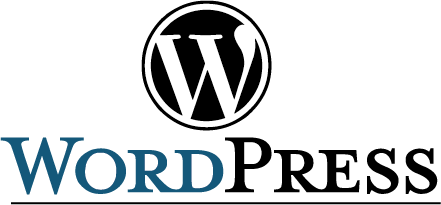
WordPress is the most popular content management system (CMS) globally, powering over 40% of websites on the internet. Whether you’re a beginner or a seasoned developer, WordPress offers unparalleled flexibility and scalability, making it the go-to platform for websites ranging from personal blogs to large-scale e-commerce stores. This blog will guide you through the fundamentals of WordPress development with practical examples.
Why Choose WordPress for Web Development?

WordPress is an excellent choice for web development due to its versatility, user-friendliness, and extensive ecosystem. Here are key reasons to choose WordPress:
Ease of Use: The intuitive interface makes it accessible for users with no coding experience.

Customizability: Thousands of themes and plugins allow developers to create unique, feature-rich websites.

SEO-Friendly: Built-in SEO tools and plugins like Yoast SEO ensure higher search engine rankings.

Community Support: A vast community of developers and users provides extensive documentation and troubleshooting help.
Cost-Effective: It’s open-source, reducing upfront costs, and many plugins and themes are free or affordable.
Scalability: Suitable for all project sizes, from small blogs to enterprise-level applications.
Most Common and Popular Uses of WordPress Development
WordPress is a versatile platform that supports a wide range of applications:
Blogs and Personal Websites: Ideal for bloggers and content creators to share ideas and stories.
E-Commerce Websites: Plugins like WooCommerce transform WordPress into a robust online store.
Business Websites: Professional websites for showcasing services, portfolios, and client testimonials.
Educational Platforms: Create e-learning websites with plugins like LearnDash or Tutor LMS.
Membership Sites: Restrict access to exclusive content using membership plugins.
News Portals and Magazines: Build dynamic websites with features like category filtering and custom layouts.
Portfolio Websites: Showcase creative work with visually appealing themes tailored for portfolios.
Click Here To Explore Your Knowledge About Wordpress Development
Key Components of WordPress Development
Themes:
Control the appearance and layout of a WordPress site.
2. Plugins:
Extend the functionality of WordPress.
3. Widgets and Shortcodes:
Widgets enhance the sidebar or footer.
Shortcodes embed custom functionality directly into posts or pages.
4. APIs:
WordPress REST API allows developers to interact with WordPress using JSON.
Benefits of WordPress Development

Flexibility: WordPress can support any type of website, from a simple blog to a full-fledged e-commerce site.
2. Extensive Plugin Ecosystem: With over 50,000 plugins, developers can add virtually any feature to a site.
3. Mobile-Responsive: Most WordPress themes are mobile-friendly, ensuring a seamless experience across devices.
4. Easy Maintenance: Regular updates to themes, plugins, and the core WordPress software ensure stability and security.
5. Large Community: Access to thousands of tutorials, forums, and resources for problem-solving and inspiration.
6. Integration Capabilities: Easily integrate with social media platforms, email marketing tools, and payment gateways.
Steps to Start WordPress Development
Set Up a Local Development Environment:
Use tools like XAMPP, MAMP, or Local by Flywheel.
Install WordPress locally and configure your database.
2. Learn the Basics of PHP, HTML, CSS, and JavaScript:
WordPress is built on PHP, with front-end elements using HTML, CSS, and JavaScript.
3. Understand WordPress Hierarchy:
Learn how templates like header.php, footer.php, and single.php work.
4. Work with the WordPress Codex:
The Codex provides extensive documentation for developers.
5. Experiment with Themes and Plugins:
Start by customizing existing themes and writing simple plugins.
Tips for Successful WordPress Development
Follow Best Practices: Use coding standards to ensure maintainable and secure code.
Leverage Child Themes: Avoid directly modifying core themes by using child themes.
Optimize Performance: Use caching plugins and optimize images for faster load times.
Secure Your Website: Implement SSL, regular updates, and strong authentication measures.
Conclusion
WordPress development offers endless possibilities for creating dynamic, feature-rich websites. By mastering its core components, leveraging its powerful APIs, and experimenting with customizations, you can develop applications tailored to diverse business needs. Start small, build your expertise, and soon you’ll be crafting WordPress solutions that stand out in today’s competitive digital landscape.
0 notes
Text
How to Be a Successful WordPress Designer
Becoming a successful WordPress designer is a great goal. WordPress is a popular tool for building websites. It’s used by millions of people around the world. If you want to design websites using WordPress, this guide will help you get started and succeed.
1. Learn the Basics of WordPress
First, you need to understand how WordPress works. WordPress is a platform that allows you to create and manage websites easily. It has many features that make it a powerful tool for web design.
To learn the basics, start by exploring the WordPress dashboard. The dashboard is where you will manage your website. Learn how to create pages, posts, and menus. Also, learn how to install themes and plugins. Themes change how your website looks, while plugins add new features.
2. Practice Design Skills
Design is more than just making things look nice. It’s about making things easy to use. When you design a website, think about how visitors will use it. Make sure your design is simple and easy to navigate.
Practice your design skills by creating websites for fun. Try different themes and layouts. Experiment with colors, fonts, and images. The more you practice, the better you will become.
3. Learn HTML and CSS
HTML and CSS are the building blocks of web design. HTML is the code that makes up the structure of a webpage. CSS is the code that controls how the webpage looks.
While you can use WordPress without knowing HTML and CSS, learning these languages will make you a better designer. You will be able to customize your websites more and solve problems faster.
There are many free resources online to learn HTML and CSS. Spend some time each week learning and practicing these skills.
4. Choose the Right Tools
As a WordPress designer, you will need some tools to help you work efficiently. Some of these tools include:
A good text editor: This is where you will write your HTML, CSS, and other code. Examples include Notepad++, Sublime Text, or Visual Studio Code.
Graphic design software: This is for creating and editing images. Examples include Adobe Photoshop, GIMP, or Canva.
A local development environment: This is where you can build and test your websites before making them live. Examples include XAMPP, WAMP, or Local by Flywheel.
Using the right tools will help you work faster and create better designs.
5. Build a Portfolio
Your portfolio is a collection of your best work. It shows potential clients what you can do. Start by creating a few websites for yourself, friends, or local businesses. As you gain experience, add your best projects to your portfolio.
Make sure your portfolio is easy to navigate and showcases your skills. Include a variety of projects to show that you can handle different types of design work.
6. Keep Learning
Web design is always changing. New tools, trends, and technologies come out all the time. To be successful, you need to keep learning.
Follow web design blogs, take online courses, and attend workshops. Learn about the latest design trends and how to use new tools. The more you learn, the more valuable you will become as a designer.
7. Network with Others
Networking is important in any field, and web design is no different. Join online communities of WordPress designers. Attend local meetups or web design conferences.
Networking can help you learn from others, find new clients, and stay motivated. Don’t be afraid to ask questions or share your knowledge with others.
8. Offer Great Customer Service
To be successful, you need to do more than just design great websites. You also need to offer great customer service. Be polite and professional when communicating with clients. Listen to their needs and make sure they are happy with your work.
Happy clients are more likely to recommend you to others. This can help you build a successful business as a WordPress designer.You can create your website s from Kiiweb Digital Solutions
Conclusion
Becoming a successful WordPress designer takes time and effort. Start by learning the basics, practicing your design skills, and learning HTML and CSS. Use the right tools, build a strong portfolio, and keep learning. Network with others and offer great customer service. If you follow these steps, you will be on your way to success.
1 note
·
View note
Text
The Ultimate Guide to PSD to WordPress Conversion: Tips, Tools, and Best Practices
Are you looking to transform your stunning PSD designs into a fully functional WordPress website? You’re not alone. Many designers and developers face the challenge of converting their Photoshop files into a dynamic online presence. With the right approach, tools, and knowledge, this process can be smooth and efficient. WordPress powers over 40% of websites on the internet today. This popularity stems from its flexibility, ease of use, and extensive range of themes and plugins. By converting your PSD files to WordPress, you're not just creating a website; you're crafting an engaging user experience that reflects your unique vision. In this ultimate guide to PSD to WordPress conversion, we’ll explore everything you need—insightful tips, essential tools, best practices for success—and even highlight common pitfalls to avoid along the way. Whether you’re a seasoned developer or just starting out in web design, you'll find valuable information here that will elevate your project from concept to reality. Let’s dive in!
What is PSD to WordPress Conversion?
PSD to WordPress conversion is the process of transforming a Photoshop design file (PSD) into a fully functional WordPress website. Designers often create stunning layouts and visuals in Photoshop, but those designs need to be translated into code for web use. This conversion involves several steps, including slicing the PSD file, coding it with HTML and CSS, and integrating it with WordPress themes and functionalities. The goal is to maintain the original design's aesthetics while ensuring that it performs well on various devices. By converting your PSD files into WordPress format, you harness the power of this popular content management system. This allows users to easily update content without diving back into complex coding or graphic design tools. It’s about making your creative vision accessible online while leveraging WordPress's robust features for optimal user engagement.
The Benefits of Converting from PSD to WordPress
Converting from PSD to WordPress opens up a world of possibilities for website design and functionality. One major benefit is the flexibility that WordPress offers. This platform allows you to easily customize your site without needing extensive coding knowledge. Speed is another significant advantage. Once your PSD file is transformed into a fully functional WordPress theme, your website can load faster. This not only enhances user experience but also positively impacts SEO rankings. Moreover, utilizing WordPress means access to countless plugins and tools. These can add features like contact forms, galleries, or e-commerce capabilities with just a few clicks. Security updates and support are readily available through the WordPress community. Regular updates help protect your site from vulnerabilities, giving you peace of mind as you focus on content creation and growth.
Step-by-Step Guide to Convert PSD to WordPress
Converting a PSD file to WordPress can seem daunting, but breaking it down makes it manageable. Start by slicing your PSD design into individual images. Tools like Adobe Photoshop allow you to export these assets easily. Next, set up a local development environment using software like XAMPP or MAMP. This helps create a sandbox for testing your site without affecting the live version. Install WordPress on this local server and choose an appropriate theme that aligns with your design structure. Now comes the coding part. Create custom templates using PHP files in your theme folder. File formats such as header.php, footer.php, and sidebar.php will be essential here. Use CSS to style each component according to your original design while ensuring responsiveness across different devices is crucial at this stage. Integrate necessary plugins for added functionality before launching everything on the web host of your choice!
Top Tools for PSD to WordPress Conversion
When tackling PSD to WordPress conversion, the right tools can make all the difference. One standout tool is Adobe XD. It streamlines design collaboration and allows for easy export of assets. Next up is Avada, a versatile theme that simplifies the conversion process while offering extensive customization options. Users appreciate its drag-and-drop interface, making it accessible even for beginners. Another powerful option is Elementor. This page builder integrates seamlessly with WordPress and provides real-time editing capabilities. Its library of templates helps speed up development time significantly. Don’t overlook plugins like WP All Import either. They enable smooth data migration from your PSD files into WordPress without losing any vital information. There’s Figma—a favorite among designers for its collaborative features and seamless integration with various coding tools. Each of these tools enhances efficiency in converting designs into functional websites.
Best Practices for Successful PSD to WordPress Conversion
To achieve a seamless PSD to WordPress conversion, start with well-structured designs. Keep your layers organized in Photoshop. Label them clearly for easier identification. Next, focus on responsive design. Ensure that the final website looks great on all devices, including tablets and smartphones. A mobile-friendly site is crucial for user experience and SEO. Optimize images before uploading them to WordPress. Compress files without sacrificing quality to improve loading speeds. Use a child theme during development if you're customizing an existing theme. This approach preserves original code while allowing you to make changes safely. Consistently test your site throughout the process. Check functionality, browser compatibility, and responsiveness regularly to catch issues early. Adhere closely to WordPress coding standards when converting HTML/CSS from your PSD files into PHP templates. Clean code enhances performance and maintainability over time.
Common Mistakes to Avoid in the Conversion Process
One common mistake during PSD to WordPress conversion is neglecting responsive design. Failing to ensure your site looks great on all devices can alienate users. Another pitfall is not optimizing images before uploading them. Large files slow down page loading, negatively affecting user experience and SEO rankings. Many forget about proper coding standards as well. Messy code can lead to maintenance headaches later on. Ignoring browser compatibility also poses issues. Always test the website across different browsers to maintain uniformity in appearance and functionality. Skipping testing phases is a critical error. Thoroughly check links, forms, and overall performance before launching the site to avoid frustrating your audience with broken elements or glitches.
Conclusion
When it comes to converting PSD files into functional WordPress websites, understanding the process is crucial. With the right tools and practices in place, you can create a stunning website that meets your needs and appeals to your audience. The benefits of transitioning from PSD to WordPress are numerous. You gain flexibility, ease of use, and access to countless plugins that enhance functionality. By following a step-by-step guide and utilizing top-notch tools specifically designed for this conversion, you can streamline the entire experience. It's essential not only to focus on technical aspects but also on best practices throughout the process. Avoiding common pitfalls will save time and ensure a smoother transition. With careful planning and execution, mastering PSD to WordPress conversion opens doors to endless possibilities for creating beautiful websites tailored perfectly for users' experiences. Embrace these guidelines as you embark on your journey into web development using WordPress!
0 notes
Text
Transforming Designs: How to Convert Figma to WordPress Effectively
In the dynamic world of web development, transforming a meticulously crafted design into a functional website is both an art and a science. Figma, a robust design tool, is increasingly becoming the go-to for web designers due to its collaborative features and versatility. However, converting Figma designs into a WordPress site can be a daunting task if you're not well-versed in the process. This blog aims to demystify the conversion process and provide a clear roadmap for developers and designers alike.

Why Choose WordPress for Your Website?
Before diving into the conversion process, it’s essential to understand why WordPress is the platform of choice for many developers. WordPress powers over 40% of all websites on the internet, thanks to its flexibility, scalability, and user-friendly interface. Custom WordPress development allows for the creation of unique, feature-rich websites that cater to specific business needs.
Benefits of Converting Figma Designs to WordPress
Visual Precision: Figma’s vector-based design system ensures that your website looks exactly as you envisioned it.
Collaboration: Figma’s collaborative tools allow designers and developers to work together seamlessly, ensuring that the final product aligns with the initial design.
Efficiency: Converting designs from Figma to WordPress can streamline the development process, saving time and reducing errors.
Step-by-Step Guide to Convert Figma to WordPress
Step 1: Prepare Your Figma Design
Organize Layers: Ensure that your Figma design is well-organized with named layers and groups. This will make the development process smoother.
Responsive Design: Check that your design is responsive, meaning it will look good on various devices and screen sizes.
Step 2: Export Assets from Figma
Images and Icons: Export all images, icons, and other graphical elements from Figma. Ensure they are in the correct formats (e.g., PNG, SVG) and resolutions.
CSS and Styles: Use Figma’s built-in tools to extract CSS styles for text, buttons, and other elements.
Step 3: Set Up Your WordPress Environment
Local Development Environment: Set up a local development environment using tools like XAMPP, WAMP, or Local by Flywheel.
Install WordPress: Download and install the latest version of WordPress on your local environment.
Step 4: Develop the WordPress Theme
HTML and CSS: Create HTML and CSS files based on your Figma design. Start with a basic HTML structure and gradually add styles.
Theme Structure: Follow the WordPress theme hierarchy to create essential files like header.php, footer.php, index.php, style.css, and functions.php.
Template Files: Use WordPress template files to define different parts of your site, such as the homepage, single posts, and pages.
Step 5: Implement Functionality
Custom Post Types: Define custom post types in functions.php if your site requires specific content types.
Advanced Custom Fields (ACF): Use the ACF plugin to create custom fields and add more flexibility to your content management.
Plugins: Install necessary plugins to add functionality like SEO, security, and performance optimization.
Step 6: Test and Optimize
Cross-Browser Testing: Ensure your site works well across different browsers and devices.
Performance Optimization: Optimize images, minify CSS and JavaScript files, and leverage caching to improve site performance.
SEO: Implement SEO best practices, including meta tags, alt texts for images, and a clean URL structure.
Common Challenges and Solutions
Responsive Design Issues: Use media queries in CSS to ensure that your site looks good on all devices.
Alignment and Spacing: Pay close attention to the spacing and alignment of elements to ensure they match your Figma design.
Complex Animations: Use CSS and JavaScript libraries like Animate.css or GSAP to recreate complex animations.
Tools and Plugins to Facilitate the Conversion
Figma to HTML Tools: Tools like Anima or Figma2HTML can automate parts of the conversion process.
WordPress Page Builders: Elementor or Beaver Builder can help you build complex layouts without extensive coding.
Theme Frameworks: Use frameworks like Genesis or Underscores to speed up theme development.
Conclusion
Converting Figma designs to WordPress involves a combination of design precision and coding expertise. By following the steps outlined above, you can ensure a smooth and efficient conversion process, resulting in a stunning, fully functional WordPress website. Whether you’re a designer looking to bring your vision to life or a developer aiming to streamline your workflow, mastering the Figma to WordPress conversion process is an invaluable skill in the realm of custom WordPress development.
0 notes
Text
WordPress plugin development to transform your site
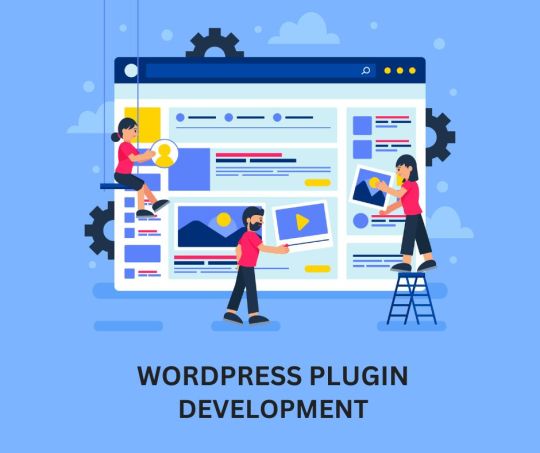
WordPress, a leading content management system, owes much of its versatility to plugins. But what exactly are WordPress plugins? In simple terms, plugins are small pieces of software that extend the functionality of a WordPress website. Think of them as add-ons or modules that you can install to enhance your site's features and capabilities.
Plugins empower WordPress users to add a wide range of functionalities to their websites without needing to write complex code from scratch. Whether you want to integrate a contact form, optimize your site for search engines, or create an online store, there's likely a plugin available to help you achieve your goal.
These plugins are developed by a diverse community of developers, ranging from hobbyists to professional software engineers. They are typically distributed through the official WordPress Plugin Development or third-party marketplaces.
Now that we've covered what WordPress plugins are, let's explore how they're developed and how you can get started creating your own plugins to customize your WordPress site further.
In the expansive world of WordPress, plugins are essential tools for enhancing the functionality of your website. Whether you're just starting or have some coding experience, understanding how to create WordPress plugins can greatly benefit you. This guide will walk you through the basics of WordPress plugin development in simple language, covering all the essential topics you need to know.
What Are WordPress Plugins?
WordPress plugins are like add-ons or extensions for your website. They allow you to add new features or modify existing ones without changing the core WordPress software. For example, you can install plugins to create contact forms, add social media sharing buttons, or optimize your site for search engines.
Why Develop Custom Plugins?
While thousands of free and paid plugins are available, sometimes you need a custom solution tailored to your specific needs. Developing your plugin gives you full control over its functionality and ensures it integrates seamlessly with your website.
Getting Started: Setting Up Your Development Environment
To begin developing WordPress plugins, you'll need a local development environment where you can test your code without affecting your live website. You can set this up using tools like XAMPP or MAMP, which allow you to run a web server on your computer. Once set up, you can install WordPress locally and start coding.
Understanding Hooks and Filters
Hooks and filters are essential concepts in WordPress plugin development. Hooks allow you to execute your code at specific points in the WordPress execution process, while filters allow you to modify data before it is displayed on the website.
Adding Functionality: Advanced Features
As you become more comfortable with plugin development, you can start adding more advanced features to your plugins. This may include creating custom post types and taxonomies, implementing shortcode functionality for inserting dynamic content or using AJAX for asynchronous interactions without page reloads.
Designing the User Interface
Creating an intuitive user interface for your plugin is important for a positive user experience. You can design custom admin pages using WordPress APIs and add settings sections for configuring your plugin. Making sure your plugin is compatible with various WordPress themes and plugins is also crucial.
Security Best Practices
Security should always be a top priority when developing WordPress plugins. Make sure to sanitize and validate user input to prevent security vulnerabilities like SQL injection or cross-site scripting (XSS). Implement proper authorization and authentication mechanisms to protect sensitive data.
Testing and Debugging Your Plugin
Before releasing your plugin to the public, it's essential to thoroughly test and debug it to ensure it works as expected. You can use tools like PHPUnit for unit testing and built-in WordPress functions for debugging. Logging and error handling are also useful for diagnosing issues effectively.
Publishing Your Plugin
Once your plugin is ready, you can publish it to the WordPress Plugin Directory for others to use. Make sure to write clear documentation and a readme file explaining how to use your plugin. Promoting your plugin through social media and engaging with the WordPress community can increase its visibility.
In conclusion,
learning how to develop WordPress plugins opens up a world of possibilities for customizing and extending your website's functionality. With practice and dedication, you can create plugins that enhance the user experience and make your website stand out. If you're looking for professional guidance and support in WordPress plugin development, consider contacting Shri Krishna Technologies. Their experienced team can help you take your WordPress projects to the next level.
#WordPressPluginDevelopmentcompany#WordPressDevelopmentCompany#ProfessionalWordPressPluginDevelopmentCompany#WordPressdevelopment#Websitedesignanddevelopment#WordPressPlugindevelopment
0 notes
Text
Mastering the Art of WordPress Web Development: A Comprehensive Guide
Introduction:
In the ever-evolving landscape of web development, WordPress has emerged as a powerhouse, empowering millions of websites across the globe. Its user-friendly interface, flexibility, and extensive plugin ecosystem make it an ideal choice for both beginners and seasoned developers. In this comprehensive guide, we will delve into the world of WordPress web development, exploring the essential aspects, best practices, and advanced techniques to help you harness the full potential of this versatile platform.
Section 1: The Foundation of WordPress Web Development
WordPress at its core is a content management system (CMS) built on PHP and MySQL. Understanding the foundational elements is crucial for any web developer. We'll explore the basics of WordPress architecture, file structure, and database management to provide you with a solid foundation for your development journey.
Section 2: Setting Up Your Development Environment
Before diving into WordPress web development, it's essential to establish a conducive environment. Learn the step-by-step process of setting up a local development environment, exploring tools like XAMPP or MAMP, and understanding version control systems such as Git for efficient collaboration and code management.
Section 3: Themes and Templates
Themes are the visual backbone of a WordPress site, and mastering them is key to creating stunning and responsive designs. Uncover the intricacies of theme development, from customizing existing themes to building your own from scratch. Dive into the world of template files, hierarchy, and the powerful Template Hierarchy system.
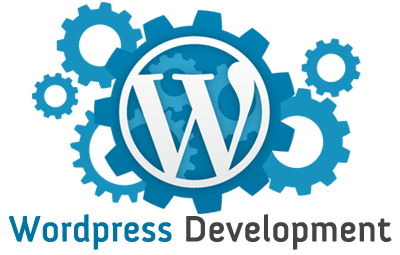
Section 4: Plugins and Functionality
Extend the functionality of your WordPress site with plugins. Learn how to choose, install, and customize plugins to add features like SEO optimization, e-commerce capabilities, and social media integration. Understand the principles of hooking and filtering to tailor plugins to your specific needs.
Section 5: Advanced Techniques and Best Practices
Take your WordPress web development skills to the next level by exploring advanced techniques and industry best practices. From optimizing performance and security to implementing custom post types and taxonomies, this section covers the finer details that elevate your projects from good to exceptional.
Section 6: Responsive Design and Accessibility
In the era of diverse devices and users, ensuring your WordPress site is responsive and accessible is paramount. Explore responsive design principles and accessibility standards, enabling you to create websites that provide a seamless experience for all users, regardless of their device or abilities.
Conclusion:
WordPress web development is a dynamic and rewarding journey. By mastering the fundamental concepts, exploring advanced techniques, and adhering to best practices, you can create websites that stand out in the digital landscape. This comprehensive guide serves as your roadmap, empowering you to navigate the world of WordPress web development with confidence and creativity.
0 notes
Text
Step-by-Step Guide: Setting Up Your WordPress Development Environment Like a Pro
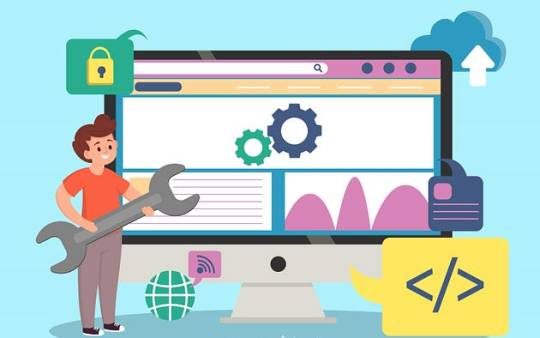
Step 1: Choose a Reliable Hosting Provider
The foundation of any successful WordPress development environment begins with selecting a reliable hosting provider. Look for a company known for its performance, security, and support. Investing in a reputable hosting service ensures a smooth development process and a reliable foundation for your projects.
Step 2: Install WordPress Locally
Before diving into development, set up a local environment on your machine using tools like XAMPP, MAMP, or Local by Flywheel. This allows you to experiment and test changes without affecting your live website. A local WordPress installation provides a secure and controlled space for development.
Step 3: Select the Right Code Editor
Choosing the right code editor is crucial for productivity. Popular choices include Visual Studio Code, Sublime Text, and Atom. These editors offer features like syntax highlighting, code completion, and extensions, enhancing your coding experience.
Step 4: Set Up Version Control with Git
Version control is essential for tracking changes and collaborating on projects. Initiate a Git repository for your WordPress development environment to keep your codebase organized and easily revert to previous versions when needed.
Step 5: Install Essential Plugins
Enhance your development process by installing key plugins that streamline tasks. Plugins like Query Monitor, Debug Bar, and WPCustomize allow for efficient debugging, performance optimization, and customization.
Step 6: Choose a Responsive Theme Framework
Opt for a responsive and customizable theme framework to expedite your development process. Popular choices include Genesis, Underscores, and Astra. These frameworks provide a solid foundation, saving time on design and development.
Step 7: Collaborate with the WordPress Development Company
Consider collaborating with the best WordPress development company to elevate your projects. Experienced professionals can offer insights, address challenges, and ensure that your development environment aligns with industry best practices. Their expertise can be invaluable, especially when dealing with complex projects or unique requirements.
Conclusion:
Setting up your WordPress development environment like a pro is a strategic investment in the success of your digital projects. By following this step-by-step guide and collaborating with the best WordPress development company, you can create a streamlined, efficient, and reliable workspace that empowers you to bring your visions to life. Stay ahead in the dynamic world of web development with a well-configured WordPress environment and the support of seasoned professionals.
#custom wordpress development company#best wordpress development company#wordpress development services#setup wordpress development environment#wordpress plugin development#canada#india#united states
0 notes
Text
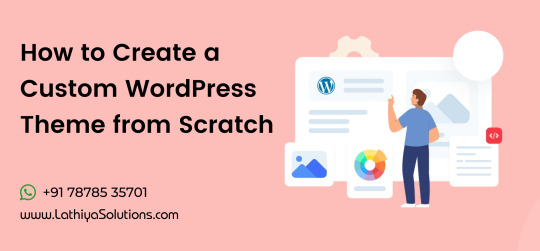
How to Create a Custom WordPress Theme from Scratch
Creating a custom WordPress theme from scratch can be an exciting yet challenging task for anyone looking to build a unique website. WordPress is known for its flexibility and ease of use, but when you want to create something truly unique, a custom theme is the best way to go. Whether you're a developer looking to expand your skills or a business aiming for a tailor-made site, understanding the basics of WordPress theme creation is essential.
With the right knowledge and tools, you can design a theme that fits your brand perfectly and provides an excellent user experience. In this guide, we’ll walk you through the steps of creating a custom WordPress theme and the best practices for doing so.
Step 1: Set Up a Local Development Environment
Before you start building your custom theme, you’ll need to set up a local development environment. This is where you can work on your site without the fear of breaking your live site. There are several tools available to help you with this, such as Local by Flywheel and XAMPP, which allow you to install WordPress locally and begin working on your theme in a safe environment.
By setting up a local environment, you can test your custom WordPress theme design before making it live, ensuring that everything works as expected. This step is crucial, especially for those who want to hire WordPress developers who are capable of setting up efficient, professional environments for theme development.
Step 2: Create the Basic Structure of Your Theme
A WordPress theme is made up of a combination of files that control the structure, style, and functionality of the site. At a minimum, you’ll need the following files:
style.css: This file holds the theme’s CSS (Cascading Style Sheets) and the metadata of the theme, such as the theme name, version, and description.
index.php: The main template file that loads the WordPress loop and displays posts or pages.
functions.php: A critical file that allows you to add custom functionality to your theme. This can include custom menus, post types, and even custom shortcodes.
header.php: This file contains the header section of the website, including links to stylesheets and scripts.
footer.php: This is the section of the theme that holds the footer content, including any important links or widgets.
By customizing these files, you can build a theme that meets your exact needs. This is where the flexibility of WordPress comes into play. You can choose to create a custom WordPress theme for your site from scratch, which gives you full control over how your website looks and functions.
Step 3: Style Your Theme Using CSS and Media Queries
Once you’ve created the basic structure, it’s time to focus on styling. Use CSS to style your theme and make it visually appealing. For responsive design, consider using media queries to ensure your theme looks great on all screen sizes.
Custom stylesheets give you full control over how your theme will appear on desktops, tablets, and mobile devices. By using a custom WordPress theme design, you can ensure that your site looks polished and matches your branding. If you’re not familiar with CSS or responsive design principles, it might be beneficial to hire a WordPress developer who can efficiently style your theme to your specifications.
Step 4: Add Functionality with WordPress Template Tags and Functions
Template tags are the foundation of WordPress themes and allow you to display dynamic content. Functions like the_content(), the_title(), and wp_nav_menu() are commonly used to display posts, titles, and navigation menus.
In addition to the built-in WordPress functionality, you can add custom functionality in your theme’s functions.php file. For example, you could create a custom widget, post type, or shortcode to enhance the theme’s capabilities. Customizing this functionality will help your theme stand out from the crowd.
Step 5: Test Your Theme
Testing is an essential part of the theme development process. Once you’ve built your custom WordPress theme, you should thoroughly test it to ensure everything works correctly. Check your theme on different devices and browsers to ensure compatibility. Use browser developer tools to inspect your site’s elements and ensure everything is responsive.
This is the stage where you can check if your theme adheres to WordPress best practices and performance guidelines. It’s also essential to make sure your theme works well with various plugins. WordPress website maintenance services can be helpful during this stage to ensure your theme is optimized and fully functional before it’s made live.
Step 6: Deploy Your Theme
After you’ve thoroughly tested your theme and are happy with the results, it’s time to make it live. You can upload your theme to your WordPress site through the WordPress dashboard or by using an FTP client. Once uploaded, activate your theme and start configuring it to match your site’s content and layout.
For many users, this is where they may consider hiring a WordPress theme developer to finalize their customizations or add advanced features that they may not be comfortable doing themselves. Whether it’s optimizing your theme’s performance or adding custom functionality, a developer can help you ensure that your theme is ready for prime time.
Conclusion
Creating a custom WordPress theme from scratch can be a rewarding experience. By following these steps, you’ll be able to build a theme that meets your unique needs and offers a great user experience. Whether you're developing your theme yourself or opting to hire a WordPress developer for assistance, the process is straightforward when you follow best practices.Remember, designing and developing a custom theme is just the beginning. If you need ongoing support, make sure to take WordPress website maintenance services to ensure your theme is up-to-date and continues to run smoothly. This ongoing support will help you stay ahead in the ever-evolving world of WordPress.
0 notes
Text
How do you edit WordPress on a localhost?
Editing a WordPress site on localhost involves setting up a local development environment on your computer. Here's a general guide on how to do this:
1. Install a Local Server Environment:
You can use software like XAMPP, MAMP, or Local by Flywheel. These tools provide a local server environment with Apache, MySQL, and PHP.
Download and install the software of your choice.
2. Download WordPress:
Visit the official WordPress website (https://wordpress.org/) and download the latest version of WordPress.
3. Set Up Database:
Open your local server software and start the server.
Create a new database for your WordPress installation. Note down the database name, username, and password.
4. Install WordPress:
Extract the WordPress zip file you downloaded.
Move the WordPress files to the root directory of your local server (e.g., htdocs in XAMPP).
Rename the wp-config-sample.php file to wp-config.php.
Open wp-config.php and enter your database details (database name, username, password).
5. Access Local WordPress Site:
Open your web browser and go to http://localhost/yourwordpressfolder (replace "yourwordpressfolder" with the actual folder name where you installed WordPress).
6. Edit Your WordPress Site:
Log in to your local WordPress site using the credentials you set during the installation.
You can now edit your WordPress site just like you would on a live server. Install themes, plugins, and make changes to content and settings.
7. Theme and Plugin Development:
If you are a developer and want to make theme or plugin changes, you can create a themes or plugins folder inside the wp-content directory and develop your code there.
8. Save Changes:
Any changes you make on your localhost won't affect your live site until you migrate the changes. For this, you might use a migration plugin or manually transfer files and the database.
Important Note: Always remember that changes made on your localhost won't reflect on the live site until you manually migrate the changes. Be cautious when making significant changes, and consider using a backup solution.
If you plan to move your site from localhost to a live server, you'll need to export your database and migrate your files. There are plugins and manual methods available for this purpose.
1 note
·
View note
Text
The Ultimate Guide to Custom WordPress Theme Development
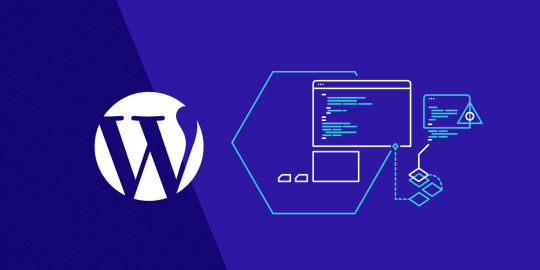
Introduction
WordPress is a versatile and powerful content management system (CMS) that powers over 40% of websites on the internet. While it offers a wide range of themes and templates for various purposes, there are times when you need something unique and tailored to your specific needs. That's where custom WordPress theme development comes into play.
In this ultimate guide to custom WordPress theme development, we'll walk you through the entire process, from understanding the basics to advanced techniques. By the end of this article, you'll be well-equipped to create your own custom WordPress theme and take full control of your website's design and functionality.
Getting Started
Understanding WordPress Themes
Before diving into custom theme development, it's crucial to have a clear understanding of what WordPress themes are. A WordPress theme is a collection of templates and stylesheets that work together to determine the look and feel of your website. We'll discuss the structure and components of a WordPress theme.
Setting Up Your Development Environment
You'll need a local development environment to build and test your custom theme. We'll guide you through the process of setting up a development environment using tools like XAMPP or MAMP, which allow you to work on your theme without affecting your live website.
HTML, CSS, and JavaScript Fundamentals
HTML Structure
We'll begin by creating the basic HTML structure for your theme. This section will cover the essentials of HTML, including headers, footers, sidebars, and content sections, to create a solid foundation for your theme.
Cascading Style Sheets (CSS)
Learn how to style your WordPress theme using CSS. We'll discuss best practices for organizing your styles, creating responsive designs, and ensuring cross-browser compatibility.
Adding Interactivity with JavaScript
While WordPress themes can function with just HTML and CSS, JavaScript can add interactivity and dynamic elements to your site. This section will introduce you to JavaScript basics and demonstrate how to integrate it into your theme.
Theme Development Basics
Creating the Theme Directory
We'll guide you through the process of setting up your custom theme directory in your WordPress installation. This includes creating the necessary files and folders.
Style Your Theme with style.css
In this section, you'll create the main stylesheet (style.css) for your theme, which determines the design and layout. We'll also explain how to write the comments at the top of the file, allowing WordPress to recognize your theme.
Developing the Header and Footer
Learn how to create the header and footer templates for your theme. These are essential components of any WordPress theme and play a significant role in the user experience.
Implementing the Main Content Area
Explore how to develop the templates for the main content area, which is where your posts and pages will be displayed. You'll learn about the loop, which is crucial for displaying dynamic content.
Template Hierarchy
Understanding the Template Hierarchy
WordPress uses a template hierarchy to determine which template file to use for each page. We'll demystify this hierarchy, explaining how to create custom templates for different types of content.
Creating Custom Templates
Learn how to create custom templates for specific content types, such as blog posts, pages, custom post types, and more. This section will help you gain full control over the layout and design of your website.
Functions and Features
Adding Custom Functions
Discover how to enhance your theme's functionality by adding custom functions. We'll cover the basics of PHP, the scripting language that powers WordPress, and show you how to integrate custom functions.
Integrating Widgets
Widgets are an essential part of WordPress themes. We'll explain how to add custom widgets to your theme's sidebar or other widgetized areas.
Theme Customizer and Options
Customize the look and feel of your theme through the WordPress Theme Customizer. Learn how to add theme options and provide users with the flexibility to adjust their site's appearance.
Theme Optimization and Security
Optimizing Your Theme
Optimization is crucial for ensuring your custom theme runs smoothly and efficiently. We'll cover best practices for performance optimization, including code minification, image optimization, and more.
Ensuring Security
Explore the importance of security in custom theme development. We'll discuss common security vulnerabilities and best practices for securing your theme.
Testing and Debugging
Testing Your Theme
Before making your custom theme live, thorough testing is essential. We'll guide you through the testing process, covering both functionality and design.
Debugging Your Theme
Debugging is a crucial part of theme development. We'll introduce you to tools and techniques for identifying and fixing issues in your code.
Theme Documentation
Writing Documentation
Proper documentation is vital for both your reference and anyone else who might use your theme. Learn how to create clear and comprehensive documentation for your custom theme.
Publishing and Maintenance
Publishing Your Theme
When your custom theme is ready, you'll want to make it available for others to use. This section will guide you through the process of publishing your theme on the WordPress repository or other platforms.
Theme Maintenance
Ongoing maintenance is essential to keep your theme up to date and secure. We'll discuss best practices for maintaining your theme and providing updates to users.
Conclusion
Custom WordPress development can be a challenging but rewarding endeavor. With this ultimate guide, you now have the knowledge and skills needed to create unique, high-quality WordPress themes that meet your specific needs. Whether you're building themes for personal projects or for clients, the possibilities are endless.
By following the steps outlined in this guide and continuously learning and experimenting, you can become a proficient WordPress developer, creating beautiful, functional, and secure websites that stand out in the digital landscape. So, roll up your sleeves, start coding, and embark on your custom WordPress theme development journey today!
0 notes
Text
Backing Up Your Localhost WordPress Site: Methods and Tools
Creating backups of your localhost WordPress site is an essential practice for safeguarding your work and ensuring you can recover from unexpected errors or data loss. Whether you are testing themes, developing plugins, or building a new website, a reliable backup process can save you time and stress. This blog outlines effective methods and tools to back up your localhost WordPress site.

Why Backup Your Localhost WordPress Site?
Prevent Data Loss
Unintentional file deletions, database errors, or hardware failures can result in losing hours of work.
Streamline Testing
Backups enable you to revert to a previous state if something breaks during theme or plugin testing.
Ease Migration
Backing up your localhost site simplifies the process of moving it to a live server or another environment.
Experiment Freely
Knowing you have a backup allows you to experiment with code or settings without fear of permanent damage.
Components to Back Up
A WordPress site consists of two primary components:
WordPress Files
These include core files, theme files, plugin files, and uploaded media stored in the wp-content folder.
Database
The database stores your website’s content, settings, and user data. It is usually managed through tools like phpMyAdmin or MySQL Workbench.
Methods for Backing Up Localhost WordPress Sites
1. Manual Backup
Steps:
Copy WordPress Files
Navigate to the directory where your WordPress installation resides (e.g., htdocs in XAMPP).
Copy all files and folders to a secure location, such as an external hard drive or cloud storage.
Export the Database
Access phpMyAdmin or your database management tool.
Select your WordPress database and click on the "Export" option.
Choose the "Quick" export method and save the .sql file.
Advantages:
Complete control over the backup process.
No additional tools required.
Disadvantages:
Time-consuming and prone to human error.
2. Using Plugins
Many WordPress backup plugins work seamlessly on localhost installations. Here are some popular choices:
UpdraftPlus
Schedule and automate backups for both files and databases.
Store backups locally or on cloud platforms like Google Drive, Dropbox, or OneDrive.
Duplicator
Create complete site backups, including files and databases.
Ideal for migrating your localhost site to a live server.
All-in-One WP Migration
Export your site’s files and database into a single file.
Easily import backups to restore your site.
Steps to Use a Plugin:
Install the chosen plugin on your localhost WordPress site.
Follow the plugin’s setup instructions to create and save backups.
Store the backups in a secure location.
Advantages:
Automated and user-friendly.
Additional features like scheduling and cloud integration.
Disadvantages:
Some advanced features may require a premium version.
3. Using Command Line Tools
If you are comfortable with the command line, tools like WP-CLI can streamline the backup process.
Steps:
Backup Files
Use commands to compress your WordPress directory into a zip file:zip -r backup.zip /path/to/wordpress
Backup Database
Export your database using WP-CLI:wp db export backup.sql
Advantages:
Fast and efficient for advanced users.
Scriptable for regular backups.
Disadvantages:
Requires familiarity with the command line.
4. Using Localhost Management Tools
Tools like Local by Flywheel and DevKinsta come with built-in backup options, making the process simpler.
Steps:
Locate the backup feature in your chosen tool.
Follow the instructions to create and store a backup.
Restore the backup if needed.
Advantages:
Integrated with the localhost environment.
Minimal setup required.
Disadvantages:
Limited to specific tools.
Best Practices for Backing Up Localhost WordPress Sites
Schedule Regular Backups
Set a schedule to ensure backups are created consistently.
Use Multiple Storage Locations
Keep backups in at least two locations, such as an external drive and cloud storage.
Test Your Backups
Regularly restore backups to verify their integrity and functionality.
Document Your Process
Maintain a clear record of your backup and restoration steps for future reference.
Secure Your Backups
Encrypt sensitive backups and limit access to authorized users.
Conclusion
Backing up your localhost WordPress site is a vital step in ensuring the safety and continuity of your work. Whether you choose manual methods, plugins, or advanced tools, the key is consistency and reliability. By implementing these best practices, you can safeguard your projects and work with confidence, knowing that you’re prepared for any challenges that come your way.
0 notes